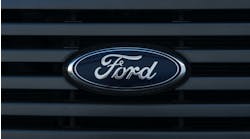August 31, 2018—-In advance of the Global Climate Action Summit, a new study tracks the difference a decade can make in climate action.
“The data show a formidable challenge when it comes to reducing emissions from the transportation sector. Cars are getting cleaner in California, but transportation emissions still increased in 2016 because there were more cars on the road, and more miles driven,” said F. Noel Perry, businessman and founder of Next 10. “California has been investing in solving that challenge for years – building a strong industry around clean transportation that could command the worldwide transportation market. The question is whether the federal government gets in the way. Federal challenges to California’s authority to set vehicle emission standards pose not just an emissions risk, but an economic risk as well.”
Emissions Increase
- In 2016, California’s transportation sector accounted for 40.5 percent of the state’s total greenhouse gas emissions — the highest percentage since 2006. On-road passenger vehicles accounted for 68.4 percent of the transportation sector’s GHG emissions.
- California’s population grew 9.2 percent from 2006 to 2016, resulting in over three million more vehicles registered over the time period.
- Vehicle miles traveled (VMT) reached a record high of 340 billion in 2016. Lower oil prices and longer commutes due to rising housing costs are chiefly to blame.
- Public transportation ridership fell for the second year in a row. Compared to 2016, total trips dropped 4.2 percent.
- Emissions from light-duty vehicles shot up in 2016, as did emissions from heavy-duty trucks, while overall heavy-duty emissions were 13.1 percent below 2008’s level, due in part to cleaner buses.
California leads nation in cleaner vehicles; China leads the world
- But it’s not all bad news. For the first time in state history, conventional internal combustion engine vehicles fueled by gasoline and diesel accounted for less than 90 percent of all on-road vehicles registered in California in 2017.
- California sold about 47 percent of all electric vehicles ever sold in the U.S. and the number of zero-emission vehicles (ZEVs) registered in California rose 38.6 percent between 2016-17.
- China accounted for 49 percent of total ZEV sales [2017] – the most in the world, and double the number of ZEV sales in Europe, the next top adopter.



